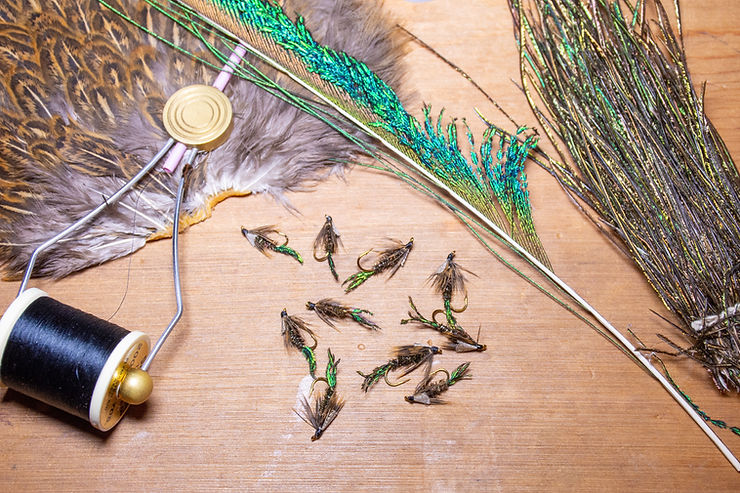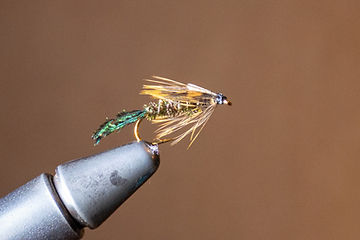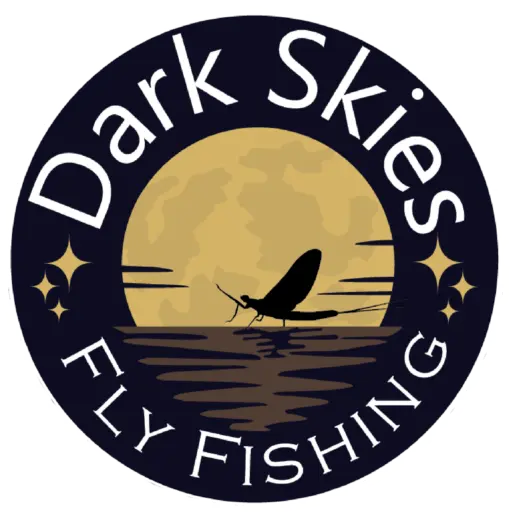Meet the Zug Bug

Something I’ve come to enjoy about tying flies commercially is the occasional request for patterns not on my usual “set list.” For instance, there are always more Woolly Buggers and Hare’s Ear Nymphs to be tied, and this time of year, with steelhead season ramping up, I’ve handled more than my share of brightly-colored egg yarn. So when a guy on Facebook messaged me about putting together a custom assortment, it was a nice little surprise to see the last fly on the list a Zug Bug.
I haven’t tied or fished a Zug Bug in years, even though it was one of the first handful of patterns I ever attempted. It’s an easy fly to tie, and very effective. I experienced consistent success with Zug Bugs back then, and considering I was a neophyte fly fisherman, that’s a testament to the pattern’s effectiveness.
The Zug Bug was invented by Cliff Zug, of Pennsylvania, in the early 1930s and was a precursor to the Prince Nymph, depending on which source you reference. In this case, I’m using Ian Whitelaw’s book The History of Fly-Fishing in Fifty Flies, and he credits the Zug Bug as being developed first. The main similarities between the Zug Bug and the Prince Nymph is the peacock herl body and brown hen hackle. Both flies are deadly in certain situations.
The Zug Bug was originally designed to imitate a case caddis or caddis larvae, but like many great patterns, it can imitate any number of aquatic insects. In my opinion, it can also imitate a number of terrestrial insects. For instance, many species of beetles, when turned in the light, exhibit a color and iridescence very similar to that of peacock herl. In fact, peacock herl is used for the body of several beetle imitations. Many of the beetles that end up in a stream die, sink, and bounce along the bottom like nymphs. I believe this is why I’ve had great success with Zug Bugs late in the season, when beetles are present in good numbers both on the banks and in the water.

Here’s the original recipe for the Zug Bug:
Hook: 2xl nymph hook, sizes 12-18. The Daiichi 1710 is a great option.
Thread: Black 12/0 Classic Waxed Semperfli Thread
Tail: Peacock swords (3) or simply use three strands of peacock herl or peacock eye as a substitute
Rib: Silver mylar tinsel, Small size
Body: Peacock herl
Legs: Brown hen hackle
Wing Case: Mallard or wood duck flank feather trimmed
If you’re a traditionalist and want to follow the original recipe, by all means have at it. Like most fly tyers, I’ve made a few tweaks to make it easier for myself or more appealing to other anglers. One of those tweaks includes the addition of a gold bead, which I only use about half the time. It seems every fly nowadays has to have a bead of some sort on it, but I really like this pattern with no bead.
The main change I make is that I use silver wire in place of the tinsel because I don’t like how much of the herl gets covered up by the tinsel. And I use dyed brown partridge soft hackle for the legs. I like the suppleness of the partridge and feel it has great movement in the water, and the speckled pattern of the partridge makes for some very realistic-looking legs.
The partridge also makes it a crossover pattern in that it can pass for a nymph or emerger, which is a feature I’ve always found desirable in a fly. It adds versatility and increases the number of situations in which it will still be effective. It can be bounced on the bottom, suspended, and even swung like a wet fly, and it catches fish wherever trout are found and any time of year. Now that I’ve tied up a dozen or so to complete this order, I believe I’ll tie up a few more for myself.
Did You Enjoy Reading About The Zug Bug?
Stay up to date with the Dark Skies Fly Fishing monthly newsletter for free and receive the latest in fly fishing news, tricks, tips, and techniques, stream reports, as well as updates on new flies added to the Online Store and exclusive discounts!
Sign Up Now